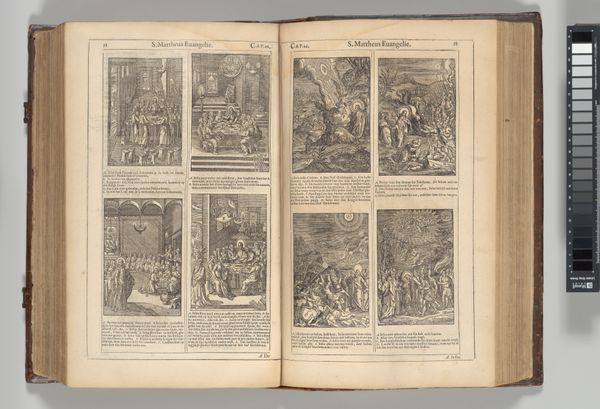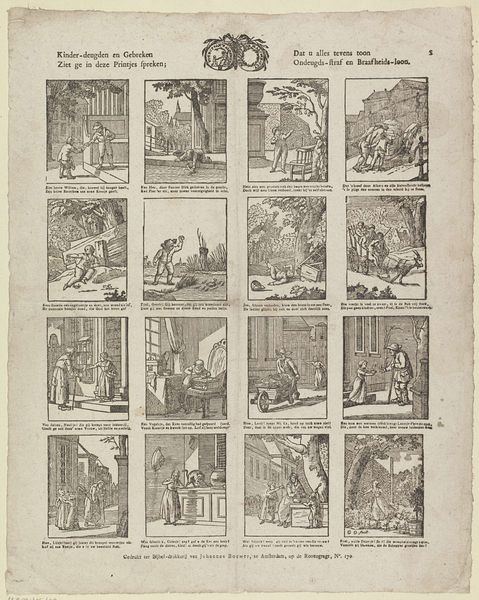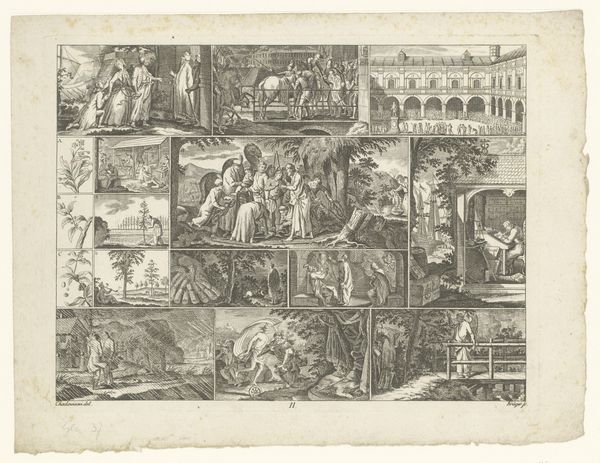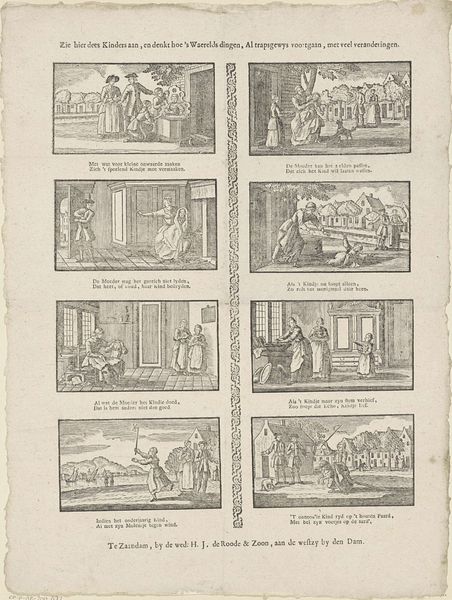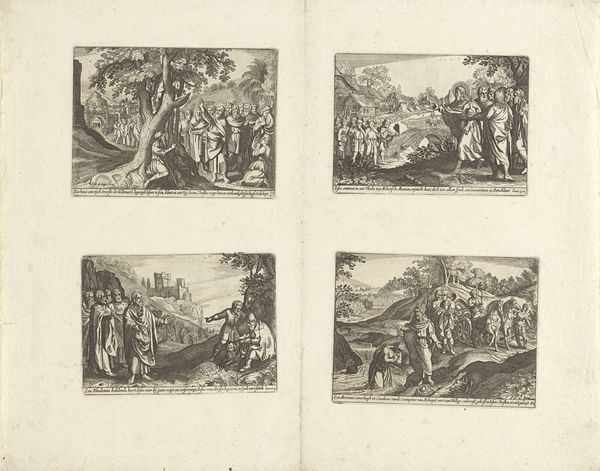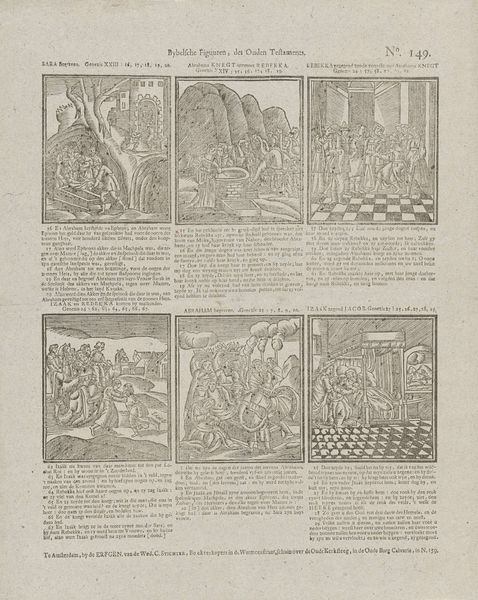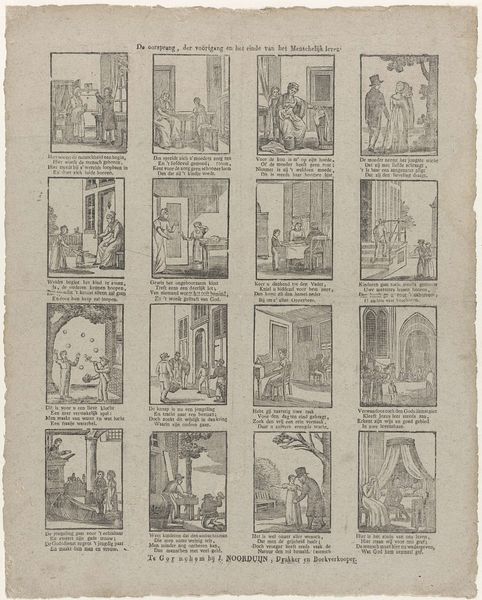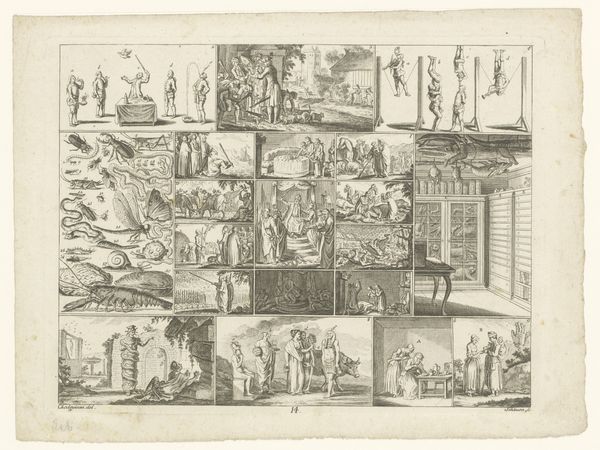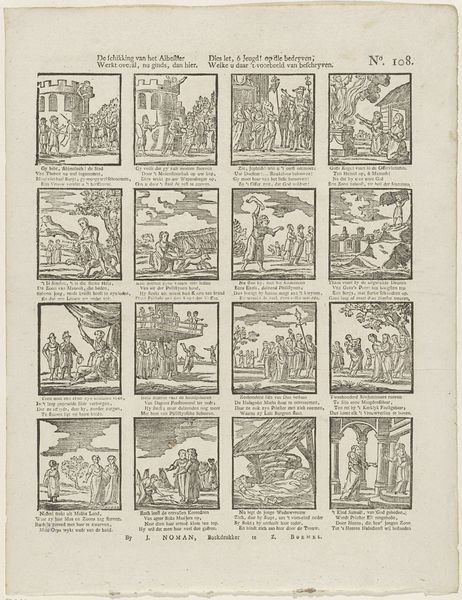
Dimensions: height 330 mm, width 421 mm
Copyright: Rijks Museum: Open Domain
Editor: This is "Taferelen uit het Oude Testament" by Christoffel van Sichem IV, made sometime between 1776 and 1813. It looks like an engraving on paper. The whole composition, with these different scenes cramped together, feels a bit overwhelming. What can you tell me about it? Curator: From a materialist perspective, what's compelling is to consider printmaking during this period, the late 18th and early 19th centuries, in terms of its role in disseminating information and shaping cultural narratives. Engravings like these, created through skilled labor, democratized access to biblical stories. We must consider the labour, materiality, and consumption that were central to it. The very act of engraving, a repetitive and exacting craft, reflects a specific kind of labor and value system. Editor: That’s interesting, I hadn't thought about the labor aspect of it. I was mostly focused on the narrative, but the material is obviously essential to how a broader audience had access. Curator: Exactly. And consider the paper itself, a relatively inexpensive material, further aiding accessibility. These prints were often hand-colored, adding another layer of labor. It makes one consider it less about artistic genius, and more about how a new medium enabled distribution and access on an industrial scale, influencing the production and consumption of these biblical narratives. How do you think this print would be experienced differently versus seeing an original painting of the same scene? Editor: That’s a really good point. Paintings are for the wealthy or to put on display in a church, and prints were more of a commercial thing, for a wider range of people. Curator: Precisely! This wasn't necessarily "high art" in the traditional sense. So, this particular print points to the rise of consumer culture, shifting from a focus solely on devotional objects to reproducible narratives consumed by a growing middle class. The means of production absolutely impacted its accessibility. Editor: Thinking about it this way opens up new layers of meaning. Thanks! Curator: Indeed. It's not just about the story but also about how and why the story was told *this* way, through this medium, at this particular time. A change in perception.
Comments
No comments
Be the first to comment and join the conversation on the ultimate creative platform.

